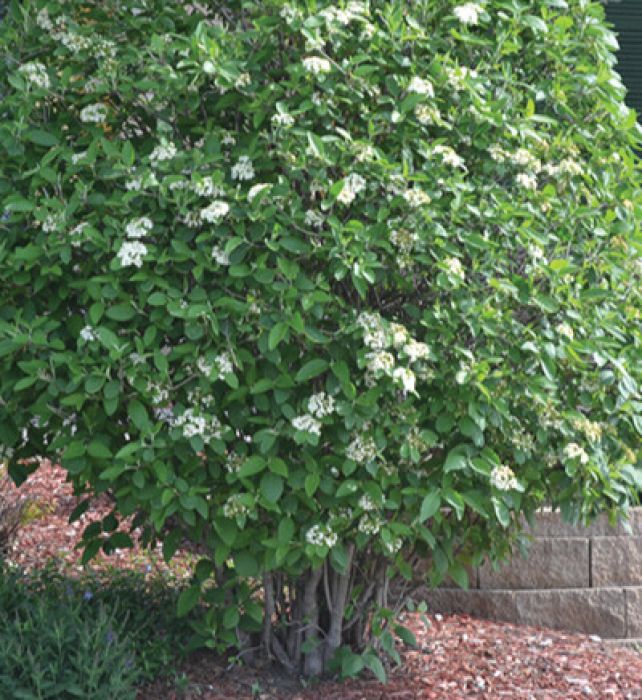Top Ten Shrubs
Tim's Top Ten Shrub Recommendations!





A splendid home garden shrub, featuring flat-topped clusters of creamy white flowers in spring and fruit which starts pink, changing to red and finally black in fall, holds color longer than other species; upright and neatly compact, tough and adaptable.
Elevate your landscaping with Gertens' unmatched variety of shrubs! Selecting the right shrubs for your backyard can enhance its beauty and functionality. Consider factors like sunlight, soil type, and mature size when choosing shrubs. For sunny areas, flowering shrubs like roses or hydrangeas can add color and charm. In shady spots, opt for shrubs like azaleas or hostas. Evergreen shrubs provide year-round interest and privacy, while deciduous shrubs offer seasonal color changes. At Gertens, we offer a wide selection of shrubs to suit every backyard need.
Height: 6 feet
Spread: 8 feet
Sunlight:![]()
![]()
Hardiness Zone: 3a
Other Names: Wayfaring Tree, Wayfaring Bush
Description:
A splendid home garden shrub, featuring flat-topped clusters of creamy white flowers in spring and fruit which starts pink, changing to red and finally black in fall, holds color longer than other species; upright and neatly compact, tough and adaptable
Ornamental Features
Mohican Viburnum is covered in stunning creamy white flat-top flowers at the ends of the branches in mid spring. The tomato-orange fruits are held in abundance in spectacular clusters from mid summer to late fall. It has dark green foliage with gray undersides throughout the season. The large fuzzy pointy leaves turn an outstanding deep purple in the fall.
Landscape Attributes
Mohican Viburnum is a multi-stemmed deciduous shrub with a more or less rounded form. Its average texture blends into the landscape, but can be balanced by one or two finer or coarser trees or shrubs for an effective composition.
This is a relatively low maintenance shrub, and should only be pruned after flowering to avoid removing any of the current season's flowers. It is a good choice for attracting birds to your yard, but is not particularly attractive to deer who tend to leave it alone in favor of tastier treats. It has no significant negative characteristics.
Mohican Viburnum is recommended for the following landscape applications;
Planting & Growing
Mohican Viburnum will grow to be about 6 feet tall at maturity, with a spread of 8 feet. It tends to fill out right to the ground and therefore doesn't necessarily require facer plants in front, and is suitable for planting under power lines. It grows at a medium rate, and under ideal conditions can be expected to live for 40 years or more.
This shrub does best in full sun to partial shade. It prefers to grow in average to moist conditions, and shouldn't be allowed to dry out. It is not particular as to soil type or pH. It is highly tolerant of urban pollution and will even thrive in inner city environments. This is a selected variety of a species not originally from North America.
| SKU | Container Size |
| S3390 | #5 Container (5 Gallon) |
| S3395 | #10 Container (10 Gallon) |
* Not all container sizes may be available at this time. See store for details on specific container size availability.
| Gerten Grown Plants | Gerten Grown Plants |
|---|---|
| Available for Pre-Order | Yes |
| Sun Preference | Full-Sun, Part-Sun |
| Mature Height (Range) | 5 - 10 feet |
| USDA Hardiness Zone | 3, 4, 5, 6, 7 |
| Common Family Name | Viburnum |